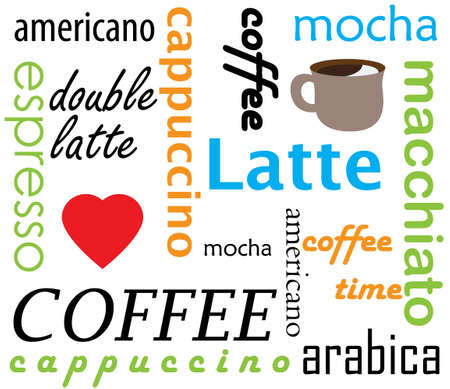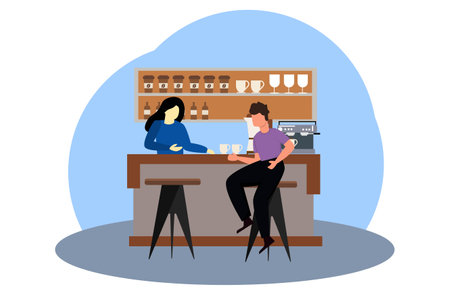Introduction to Cafe Culture in India
In recent years, the cafe culture in India has undergone a remarkable transformation, especially across urban and semi-urban landscapes. Traditionally, India’s social fabric was woven around tea stalls or chai tapris, serving as informal meeting spots for locals. However, with changing lifestyles and the rapid urbanisation of cities like Bengaluru, Mumbai, Delhi, and even Tier-2 hubs such as Pune and Jaipur, cafes have emerged as vibrant social hotspots. This evolution is closely linked to the aspirations of the growing middle class, increased disposable incomes, and the influence of globalisation.
The Indian youth today are at the forefront of this trend, seeking out cafes not merely for their beverages but as preferred venues for studying, networking, work-from-cafe sessions, and friendly get-togethers. The ambience, Wi-Fi availability, and a curated food menu make these spaces more than just coffee stops—they become lifestyle statements. Global brands like Starbucks and Costa Coffee have set up shop alongside homegrown giants such as Café Coffee Day (CCD) and Barista. At the same time, local favourites like Blue Tokai and Third Wave Coffee Roasters tap into regional tastes while maintaining a cosmopolitan vibe.
This dynamic blend of international chains and indigenous players has intensified competition within the sector, prompting cafes to rethink their customer engagement strategies. As patrons grow more discerning and experience-driven, loyalty programmes and innovative retention strategies have become critical tools for building long-term relationships with cafe-goers across India. Thus, the modern Indian cafe is not just about coffee—it is about crafting experiences that resonate with evolving cultural trends and consumer expectations.
Overview of Loyalty Programmes in the Indian Context
In India, the café culture has undergone a remarkable transformation over the past decade, paralleling the rise of urbanisation and changing consumer lifestyles. With this shift, loyalty programmes have emerged as a pivotal tool for customer retention among Indian cafés, blending global trends with indigenous sensibilities. The unique landscape of Indian cafés—ranging from homegrown chains like Café Coffee Day to international players such as Starbucks—has shaped how these programmes are conceptualised and executed.
Popular Formats of Café Loyalty Programmes
Indian cafés have experimented with several loyalty programme formats to attract and retain their diverse clientele. While some establishments favour point-based systems akin to those seen in Western markets, others opt for punch cards or tiered memberships that resonate with local preferences. The table below illustrates some commonly adopted formats:
| Programme Format | Description | Example in India |
|---|---|---|
| Point-Based Systems | Customers earn points on every purchase, redeemable for rewards or discounts. | Starbucks Rewards, Barista Loyalty Programme |
| Punch Cards | Buy a set number of beverages/snacks and get one free. | Café Coffee Day’s “Every 5th Coffee Free” card |
| Tiered Memberships | Exclusive benefits based on spending levels (e.g., Silver, Gold tiers). | The Coffee Bean & Tea Leaf Club |
| App-Integrated Offers | Loyalty points, special deals, and custom offers via mobile apps. | Chaayos app-based loyalty rewards |
Traditional Customer Engagement Practices
Long before the introduction of formal loyalty programmes, Indian cafés relied on deep-rooted engagement practices to foster customer loyalty. Personalised service—such as remembering regular customers’ favourite orders (“usual chai with less sugar”), festive season discounts during Diwali or Holi, and offering complimentary snacks with tea—are all part of the desi tradition. These gestures created a sense of belonging and community that modern digital loyalty schemes now aim to replicate at scale.
The Desi Twist: Adapting Western Models
As Western café brands made their way into India, they brought along sophisticated loyalty models. However, successful adaptation required more than mere transplantation—it demanded localisation. Many Indian cafés infused these models with a “desi twist”: adding regional flavours to reward menus (like masala chai lattes), integrating UPI/mobile wallet payments for earning/redeeming points, and celebrating local festivals through limited-time loyalty bonuses. This hybrid approach ensures that while the structure may mirror global best practices, the soul remains unmistakably Indian.

3. Behavioural Insights: What Keeps Indian Customers Coming Back
Understanding the Indian café-goer’s psyche is key to designing loyalty programmes that actually work. At the heart of this lies a deep appreciation for personalised experiences. Indian customers, hailing from a culture steeped in hospitality and community, respond strongly to gestures that make them feel valued as individuals rather than just another face in the crowd. Whether it’s remembering a regular’s preferred chai blend or sending birthday discounts via WhatsApp, cafés that invest in these small personal touches often see higher rates of customer retention.
Value-for-Money: The Indian Perspective
The concept of ‘paisa vasool’—getting one’s money’s worth—is deeply ingrained in Indian consumer behaviour. Indians are known to be discerning spenders who seek tangible returns on their investments, even when it comes to leisure activities like café visits. Loyalty programmes that offer clear, transparent rewards such as “Buy 5, Get 1 Free” or cashback on digital wallets resonate well with local patrons. Flexible options, like redeemable points for a variety of menu items or exclusive member-only deals during festivals, further reinforce the feeling of value-for-money and encourage repeat visits.
The Power of Word-of-Mouth in Social Circles
India’s collectivist culture means decisions are often influenced by family, friends, and larger social circles. Word-of-mouth remains a powerful force; an enthusiastic recommendation from a cousin or colleague can bring a steady stream of new faces to a café. Savvy operators tap into this by encouraging social sharing—think referral bonuses, group discounts, or special events for loyal customers who bring friends along. In urban India, where digital communities flourish alongside traditional ones, positive reviews on platforms like Zomato or food-centric WhatsApp groups can create ripple effects far beyond individual transactions.
Cultural Nuances: From Chai Pe Charcha to Modern Cafés
While international coffee chains may have popularised the concept of loyalty cards and apps, the roots of café loyalty in India can be traced back to local tea stalls (‘chaiwallahs’) where community and familiarity reign supreme. Today’s successful café brands honour this legacy by blending technology-enabled loyalty schemes with culturally relevant gestures—like celebrating regional festivals or recognising local customs—that foster genuine relationships and lasting brand affinity among Indian customers.
4. Case Studies: Iconic Cafe Chains and Indigenous Success Stories
India’s café culture is unique, blending global trends with deep-rooted local sensibilities. When it comes to loyalty programmes and customer retention, iconic chains like Café Coffee Day (CCD), Chai Point, and countless neighbourhood adda spots have crafted distinctly Indian models that resonate with their patrons’ values and social fabric.
Café Coffee Day: Bridging Modernity and Familiarity
CCD, often called “the Starbucks of India,” stands out for its homegrown approach. Their ‘CCD Circle’ loyalty programme rewards regulars not just with discounts but also with exclusive event invites, birthday surprises, and festival-based offers. This integration of Indian festivals—such as Diwali specials or Holi-themed drinks—infuses a sense of celebration and belonging, echoing the Indian tradition of hospitality (atithi devo bhava). CCD’s point system also allows customers to redeem rewards in ways that suit their diverse preferences, reflecting the pluralism at the heart of Indian society.
Chai Point: Rooted in Everyday Rituals
Chai Point has tapped into India’s daily tea-drinking ritual, positioning itself as a modern yet familiar chaiwala. Its ‘Chai-on-Call’ app-based loyalty scheme awards points per purchase but goes beyond transactions by offering free refills during monsoons—a nod to the Indian love for sipping chai during rains. The brand’s ‘Corporate Chai’ programme further tailors benefits for office-goers, mirroring the communal aspect of tea breaks in Indian workplaces. Their rewards are often connected to regional festivities or cricket matches, driving emotional engagement through shared cultural moments.
Local Adda Spots: Hyperlocal Loyalty with Vernacular Warmth
Outside large chains, independent cafes and adda (hangout) spots leverage hyperlocal strategies. Many run loyalty cards or WhatsApp groups where regulars receive personalised invitations to poetry nights, indie music gigs, or free snacks on Sankranti and Pongal. These schemes foster a sense of community akin to traditional Indian gatherings, where relationships matter more than mere transactions.
Comparative Table: Loyalty Programme Features
| Café Brand/Type | Loyalty Mechanism | Cultural Integration | Key Customer Touchpoints |
|---|---|---|---|
| Café Coffee Day (CCD) | Points-based; festival offers; surprise gifts | Diwali/Holi specials; birthday rewards | App, physical stores, SMS/email updates |
| Chai Point | App points; seasonal bonuses; corporate plans | Monsoon refills; cricket tie-ins; office chai breaks | App, web orders, workplace kiosks |
| Local Adda Cafes | Loyalty cards; WhatsApp group perks; event invites | Regional festivals; poetry/music evenings | In-person interaction, messaging apps |
The Takeaway: Blending Technology With Tradition
The success of these examples demonstrates that effective loyalty programmes in India are not just about digital points or discounts—they are about weaving together technology with vernacular warmth and cultural resonance. Whether it’s CCD’s national presence or a small Kolkata adda spot’s intimate gatherings, customer retention thrives when brands honour both the diversity and unity at the core of Indian café culture.
5. Digital Innovations and Hyperlocal Strategies
India’s café culture has rapidly embraced digital transformation, blending cutting-edge technology with distinct local flavours to foster customer loyalty. Mobile apps are now at the heart of loyalty programmes, enabling customers to seamlessly earn and redeem points, receive personalised offers, and stay updated about new launches. Recognising India’s mobile-first audience, leading café chains have invested in intuitive apps that support not only English but also major regional languages like Hindi, Tamil, and Bengali, thus bridging the digital divide across demographics.
Another uniquely Indian innovation is the use of WhatsApp-based loyalty sign-ups. Given WhatsApp’s near-universal penetration in both urban metros and tier-2 cities, cafés invite customers to join loyalty programmes through simple QR scans or direct messaging. This approach fits naturally into daily communication habits and ensures high engagement rates—turning everyday chai breaks into opportunities for reward collection.
UPI (Unified Payments Interface) integration has further revolutionised the payment and rewards landscape. With UPI becoming a household name from Mumbai to Mangalore, cafés now offer instant cashback, discounts, or points for every UPI transaction. Customers appreciate not just the convenience but also the feeling of being rewarded for using a payment system they trust. This seamless digital experience strengthens brand recall and encourages repeated visits.
Indian café brands have also mastered hyperlocal strategies by weaving regional festivals into their retention campaigns. Whether it’s offering special sweets during Diwali, themed drinks for Holi, or exclusive combos for Pongal and Onam, these festival-centric promotions create a sense of belonging and celebration. By tapping into the cultural calendar, cafés connect emotionally with their patrons and foster deeper community ties.
In summary, by leveraging mobile apps in vernacular languages, harnessing WhatsApp’s reach for easy sign-ups, integrating UPI for rewarding cashless payments, and celebrating regional festivals with tailored offers, Indian cafés are setting new benchmarks in digital loyalty innovation. These approaches not only drive customer retention but also strengthen the unique identity of each café amidst India’s richly diverse café landscape.
6. Challenges and Future Directions
While cafe loyalty programmes in India have shown promising results, their journey is far from smooth. One of the foremost hurdles is the digital divide that continues to define urban-rural consumer experiences. Although metropolitan cities like Bengaluru, Mumbai, and Delhi boast a tech-savvy young audience eager to embrace digital loyalty apps and QR-based rewards, a significant proportion of Indian consumers in Tier 2 and Tier 3 cities still rely on traditional paper cards or even word-of-mouth-based recognition. This disparity poses a unique challenge for pan-India brands hoping to implement seamless, technology-driven customer retention strategies.
Diverse demographics further complicate the landscape. India’s cafe-goers range from college students seeking affordable treats to families indulging in weekend outings, and working professionals looking for premium experiences. Their expectations from loyalty programmes vary widely: while some value immediate monetary rewards, others appreciate personalised experiences or exclusive event invitations. Crafting a one-size-fits-all programme that resonates across such varied segments is challenging, requiring nuanced understanding of regional cultures, languages, and even taste preferences.
Customer trust remains another significant concern. In an era where data privacy has become a global talking point, many Indian customers are wary of sharing personal details in exchange for loyalty points. The legacy of scams and data misuse has made trust-building critical for any brand-led initiative. Establishing transparent data practices and clear communication becomes essential to reassure customers that their information will be handled with care—a factor increasingly influencing participation rates in loyalty schemes.
Looking ahead, the future of cafe loyalty programmes in India is poised at an exciting crossroads. As digital penetration deepens and payment platforms like UPI continue to integrate with everyday life, cafes have the opportunity to create more personalised and frictionless loyalty journeys. Artificial intelligence could enable hyper-local offers based on past purchase behaviour or even regional festivals—think special discounts during Onam in Kerala or Durga Puja in West Bengal. At the same time, there is growing scope for collaborations with other lifestyle brands or local artisans, embedding cafes more deeply into India’s cultural fabric.
However, success will depend on balancing modernisation with respect for tradition. While technology can streamline operations and enhance convenience, brands must not lose sight of the warmth and hospitality that define India’s cafe culture—from remembering regulars by name to celebrating local customs within store environments. Those who can blend innovation with empathy are likely to win both hearts and repeat visits in this rapidly evolving but tradition-conscious market.

